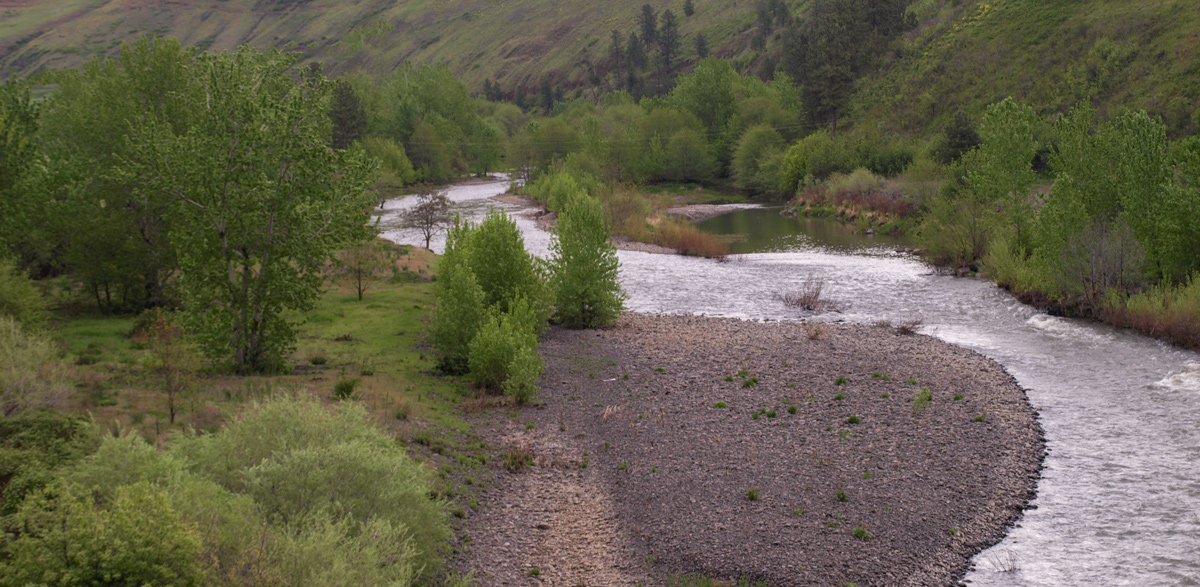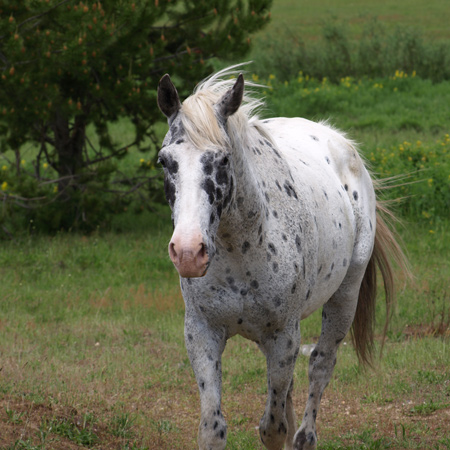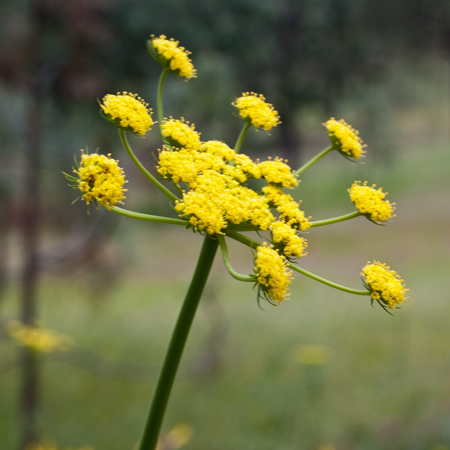The expedition spends most of the day at the Potlatch River—their Colter’s Creek. Lewis meets three Coeur d’Alene Indians, and Clark gives medical aid as payments of food. Lewis collects a nine-leaved biscuit root specimen—an indigenous vegetable. They eventually move to another Nez Perce village a few miles up the Clearwater River.
Potlatch River (Colter’s Creek)
A road cut and telephone pole have been digitally removed. © 3 May 2009 by Kristopher K. Townsend. Permission to use granted under the Creative Commons Attribution-Share Alike 4.0 International license.
Colter’s Creek
the natives have a considerable salmon fishery up Colter’s Creek. this stream extends itself to the pirs of the rocky mountain and in much the greater part of it’s course passes through a well timbered pine country it is 25 yds. wide and discharges a large body of water. the banks low and bed formed of pebbles.—
—Meriwether Lewis
Appaloosa Horse, Weippe Prairie
© 7 June 2009 by Kristopher K. Townsend. Permission to use granted under the Creative Commons Attribution-Share Alike 4.0 International license.
Selling Medical Aid
we received a Second horse for Medecine & procription to a little girl with the rhumitism whome I had bathed in worm water, and anointed her a little with balsom Capivia.
—William Clark
Treating Sore Eyes
Sore Eyes is an universal Complaint among all the nations which we have Seen on the West Side of the rocky Mountains. I was busily imployed for several hours this morning in administering eye water to a Croud of applicants.
—William Clark
Coeur d’Alene Indians
at this place we met with three men of a nation called the Skeets-so-mich [Coeur d’Alenes] who reside at the falls of a large river disharging itself into the Columbia on it’s East side to the North of the entrance of Clark’s river. this river they informed us headed in a large lake in the mountains and that the falls below which they resided was at no great distance from the lake. these people are the same in their dress and appearance with the Chopunnish, tho’ their language is intirely different a circumstance which I did not learn untill we were about to set out and it was then too late to take a vocabulary.
—Meriwether Lewis
The Clark Fork River
The river here called Clark’s river is that which we have heretofore called the Flathead river, I have thus named it in honour of my worthy friend and fellow traveller Capt. Clark. for this stream we know no indian name and no whiteman but ourselves was ever on it’s principal branches.
—Meriwether Lewis
Nine-leaved Biscuit-root
Lomatium triternatum
Eastern Washington, 30 May 2011. © by Kristopher K. Townsend. Permission to use granted under the Creative Commons Attribution-Share Alike 4.0 International license.
Nine-leaved Biscuit-root Specimen
A root 5 or 6 inches long eaten raw or boiled by the natives. On the Kooskooske My. 6th 1806.
—Meriwether Lewis[1]Moulton, ed. Herbarium, specimen 97.
Weather Diary
State of the Weather at rise
Wind at rise
State of the Weather at 4 P.M. Wind at 4 P.M. State of the Kooskooskee rain after cloudy & rain N. E. fair after rain N E —Meriwether Lewis[2]To assist the reader of this web page, the date column is not presented, the river columns have been merged, and some abbreviations have been spelled out.



